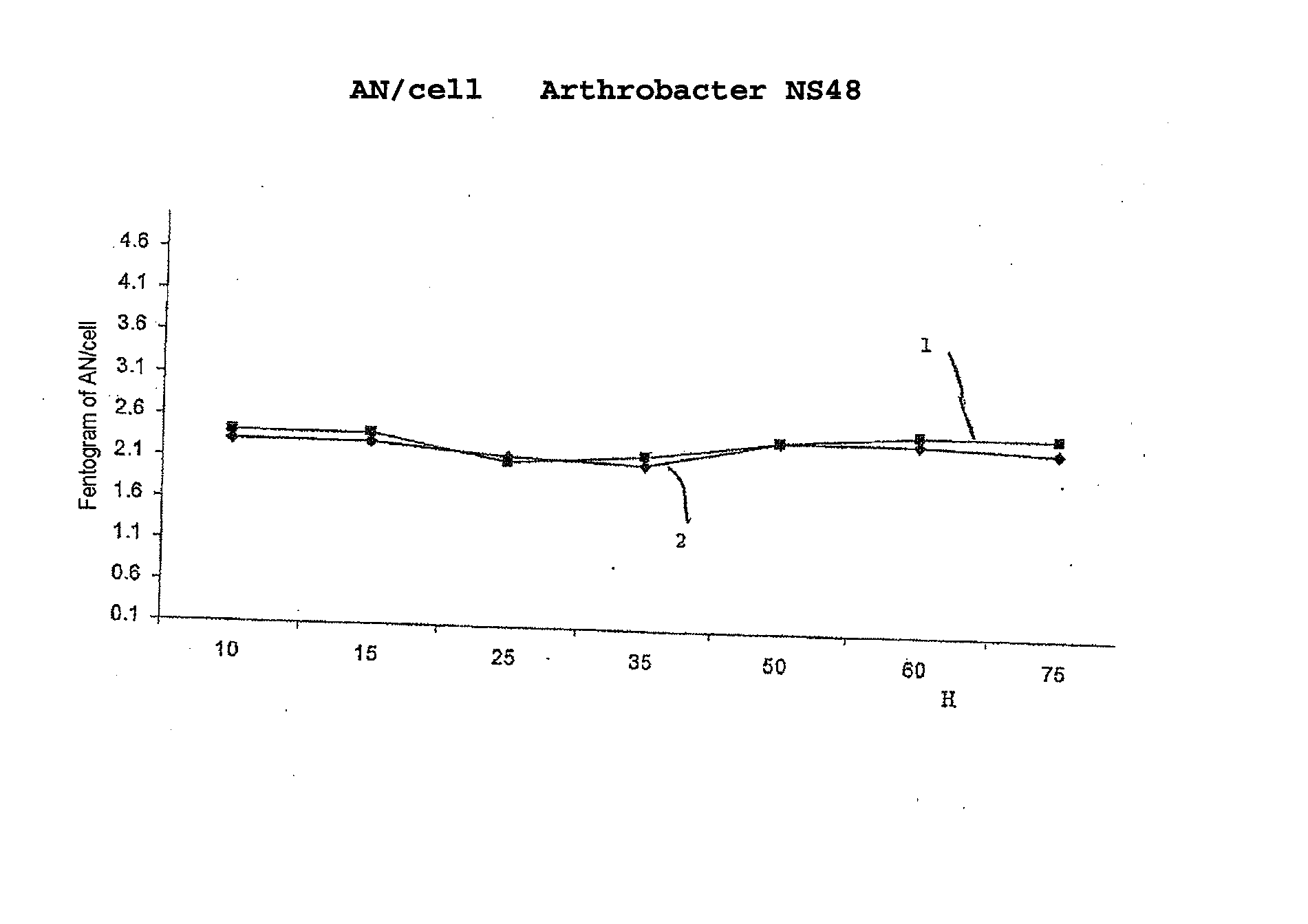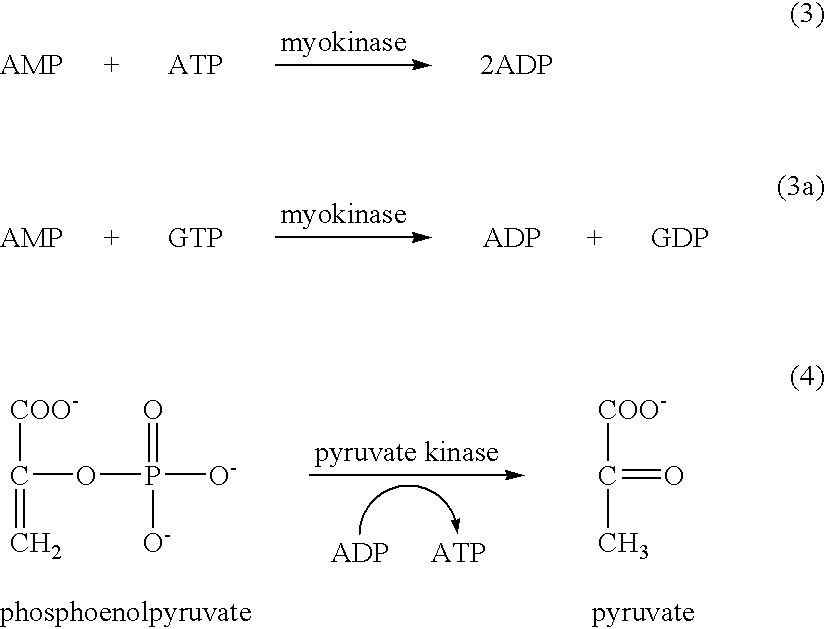ATP-metry based on intracellular adenyl nucleotides for detecting and counting cells, use and implementing method for determining bacteria in particular devoid of atp
a technology of intracellular adenyl nucleotides and atpmetry, which is applied in the field of atpmetry based on intracellular adenyl nucleotides for detecting and counting cells, and using the implementation method for determining bacteria, can solve the problems of ineffectiveness with respect to virtually all other bacteria encountered, in particular in nature, and achieve the effect of less expensiv
- Summary
- Abstract
- Description
- Claims
- Application Information
AI Technical Summary
Benefits of technology
Problems solved by technology
Method used
Image
Examples
example 1
Counting of Anthrax
[0069] An aqueous sample is obtained, by sparging, from a sample of 1 L of air containing anthrax strains, to be counted. The strains present are immunocaptured by means of a column comprising immobilized anti-anthrax polyclonal antibodies. The anthrax strains thus purified and concentrated are collected in a small volume of aqueous buffer. Further concentration is carried out by evaporation-concentration under vacuum at ambient temperature. The residues of nucleotides such as ANs, that may be present in the resulting aqueous medium, are removed by means of adenosine phosphate deaminase, which is subsequently inactivated.
[0070] The wall of the anthrax strains is lyzed by adding Tris and EDTA and then placing said strains in a microwave. The liquid medium which contains the intracellular ANs is recovered by centrifugation. Myokinase and pyruvate kinase are added in order to convert the AMP and ADP to ATP. The firefly luciferin and the firefly luciferase are added...
example 2
Counting of Streptococcus faecalis
[0073] The procedure as indicated in example 1 is carried out using the soil from a sheepfold presumed to be infected with Streptococcus faecalis.
[0074] It is observed that the soil contains 260 CFU / L of Streptococcus faecalis.
example 3
Development of a Protocol for Identifying Legionellae
[0075] I—Obtaining the AN / Cell Ratio for Bacteria in Pure Culture
[0076] A—Establishment of a Signal Intensity / Number of Legionellae Relationship
[0077] The objective is to obtain an average value for the ANs per living Legionella pneumophila cell in order to perform a count per culture and to select the optimal working conditions.
[0078] Parameters Studied:
TemperatureambientBuffer conditionsTrispH7.75Lysis conditions100 μl DMSO then 500 μl Tris, pH 7.75or600 μl boiling Tris (microwave for 3 min)Reaction volume200 μL of sample with 1 IU of pyruvatekinase and 1 IU of adenylate kinase + PEP(time: 10 min)Addition of 10 μl of LL (firefly luciferin / luciferase complex)Signal acquisition time10 seconds (RLU AN)Addition of 10 μl of ATP10 seconds (RLU AN + ATPs)(100 pmol)After immunoseparation:the final result is obtained inless than 15 minutes
[0079] B—Assays on Bacteria Immobilized on Magnetic Beads
[0080] Parameters Studied: [0081] Na...
PUM
| Property | Measurement | Unit |
|---|---|---|
| volumes | aaaaa | aaaaa |
| volumes | aaaaa | aaaaa |
| pH | aaaaa | aaaaa |
Abstract
Description
Claims
Application Information
 Login to View More
Login to View More - R&D
- Intellectual Property
- Life Sciences
- Materials
- Tech Scout
- Unparalleled Data Quality
- Higher Quality Content
- 60% Fewer Hallucinations
Browse by: Latest US Patents, China's latest patents, Technical Efficacy Thesaurus, Application Domain, Technology Topic, Popular Technical Reports.
© 2025 PatSnap. All rights reserved.Legal|Privacy policy|Modern Slavery Act Transparency Statement|Sitemap|About US| Contact US: help@patsnap.com



